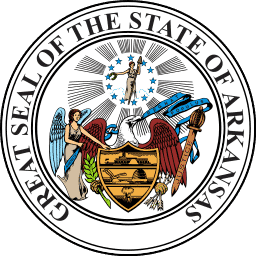…
There are four physical therapy assistant schools in Arkansas. All of them are public institutions, including large state universities and smaller community colleges.
Programs are available on campuses in El Dorado, Bentonville, Ozark, Jonesboro, and Mountain Home. They provide the education that state officials require for licensure. Students also must pass two examinations before entering the job market.
Arkansas PTAs enjoy incomes comparable to the national average. Demand for their services is growing, with about 180 job openings expected annually from 2016-26.
You Might Also Like:

The purpose of this licensing and regulatory office is “to protect the public from incompetent, unprofessional, and unlawful practice.” The board drafts standards and requirements for PTA school programs, post-graduation tests, new and renewed licenses, continuing education, and professional practice.
These officials also receive, investigate, and adjudicate complaints against practitioners. The board may refuse to grant a license, revoke the credentials, charge fines, or take other action to punish those who violate the Arkansas Physical Therapy Practice Act by breaking laws or engaging in unprofessional conduct.
The five board members include four licensed physical therapists and one person who is a public representative.
A prospective practitioner needs either a high school diploma or a GED. Since some PTA schools have competitive admission processes, it is a good idea to take extra health and science courses in high school.
The state board stipulates that anyone wishing to become a physical therapy assistant in Arkansas should be a graduate of a postsecondary institution sanctioned by the Commission on Accreditation in Physical Therapy Education (CAPTE). The organization accredits schools that satisfy criteria regarding coursework and hands-on training; faculty qualifications and experience; and rates of graduation, licensure exam success, and employment.
Anyone with a diploma from a non-CAPTE school must submit an original evaluation done specifically for Arkansas by a board-approved agency.
Every second year, practicing PTAs are required to earn one continuing education credit (10 contact hours). The instruction has to be in an accredited course or program by a provider the board has approved.
After successfully completing a degree program, the following step is to apply online for a license. The state board wants school transcripts, any other test scores, fingerprints, a criminal history record, and a fee.
A license is not issued until the applicant receives an acceptable score on the National Physical Therapy Examination for PTAs. The Federation of State Boards of Physical Therapy is the test administrator. With FSBPT approval, a student takes the exam on a computer at a Prometric Testing Center. There are four exam dates annually.
Another mandate is passing a jurisprudence exam on the board’s website. The test assesses an applicant’s knowledge of state and federal laws concerning the practice of physical therapy.
We selected the schools below based on the programs that they offer, accreditation, student population, graduation rate and reputation.
View our Ranking Methodology to learn more about how we rank schools.

26%
1473
This small school in El Dorado awards associate in applied science degrees to PTA graduates.
Applicants must first get B grades in 32 semester hours of these prerequisite classes: Composition I and II, College Algebra, Computer and Information Processing, Anatomy & Physiology I and II (with labs), and Medical Terminology. Other admission requirements are an acceptable score on the TEAS entrance exam and proof of observing for eight hours in two physical therapy settings.
The technical phase of PTA training involves three semesters of full-time day classes and internships. Class sizes are no larger than 20 students.
23%
7979
PTA students pursuing AAS degrees at this institution attend classes in Bentonville. They need to have nine hours’ observation experience in clinics, and pass general education classes, to be accepted.
Technical courses include PT Tests and Measures, Life Span, Pathophysiological Conditions, Gait Analysis and Training, Neurophysiology, Special Topics, and Pediatrics. Students perform three clinical internships. Students also must log 20 hours per semester of service learning for regional nonprofit agencies.
In a partnership with the University of Arkansas for Medical Sciences, PTA and PT students are placed in the same classrooms and sometimes work together in clinical rotations.
41%
12101
Founded in 1909, this is the third-largest postsecondary school in Arkansas. ATU’s PTA program is on its Ozark campus.
Students start by completing 28 credit hours of general education and medical courses. They then move on to the technical curriculum, which includes Data Collection in Physical Therapy Laboratory, Neurological Development and Motor Control, Musculoskeletal Rehabilitation, and Neurological Rehabilitation. There are three clinical assignments.
Students must commit to 30-36 hours per week, plus preparation and study time, due to the curriculum’s “very intense nature.” To get into the program, they need 16 hours of volunteer experience in clinics.
48%
13709
Also dating to 1909, A-State’s enrollment ranks second in the state. PTA students spend one year completing 28 credit hours of general education and support classes in college algebra or math, human anatomy and physiology, psychology, physics, composition, and U.S. history.
The second year involves professional courses on either the Jonesboro or Mountain Home campus. Among the classes are Movement Science, Musculoskeletal PT, Neurological PT, and Physical Agents and Massage. The curriculum also features three clinical rotations totaling 16 weeks of full-time work.
Only about half or fewer of program applicants are accepted. Admission criteria include clinical observation experience.
Prospective PTAs in this state may study on either a sprawling university campus or at a community college that may be closer to home. Tuition rates are typically lower at community colleges. All these schools require general education and prerequisite coursework, in addition to technical PTA classes.
Instruction and real-world training entails classes with lectures, labs with practical training, and assignments in clinical settings. Graduates receive associate in applied science degree within two years or sooner.
Common courses include principles of PT, physiology, anatomy, kinesiology, PT treatments and procedures, therapeutic exercises, and pathological conditions.
$27.75
$56,700
31%
In this state, the median income for a PTA is more than $56,700 annually or $27.75 hourly—approximately the same as the United States averages (over $58,000 or nearly $28).
Practitioners whose pay ranks them in the top 10% make $77,800 a year or about $37.40 per hour in Arkansas—a tad less than around $79,800 or $38.40 nationally. Those among the bottom 10% earn about $39,900 or $19.20 in the state—better than the country’s medians of almost $35,800 or near $16.25.
Employment for PTAs here totalled 1,070 in 2016. Federal labor forecasts suggested that there would be 1,400 jobs a decade later—31 percent growth, matching the predicted national rate.
Sources: U.S. Bureau of Labor Statistics, CareerOneStop

LIMITED TIME DEAL